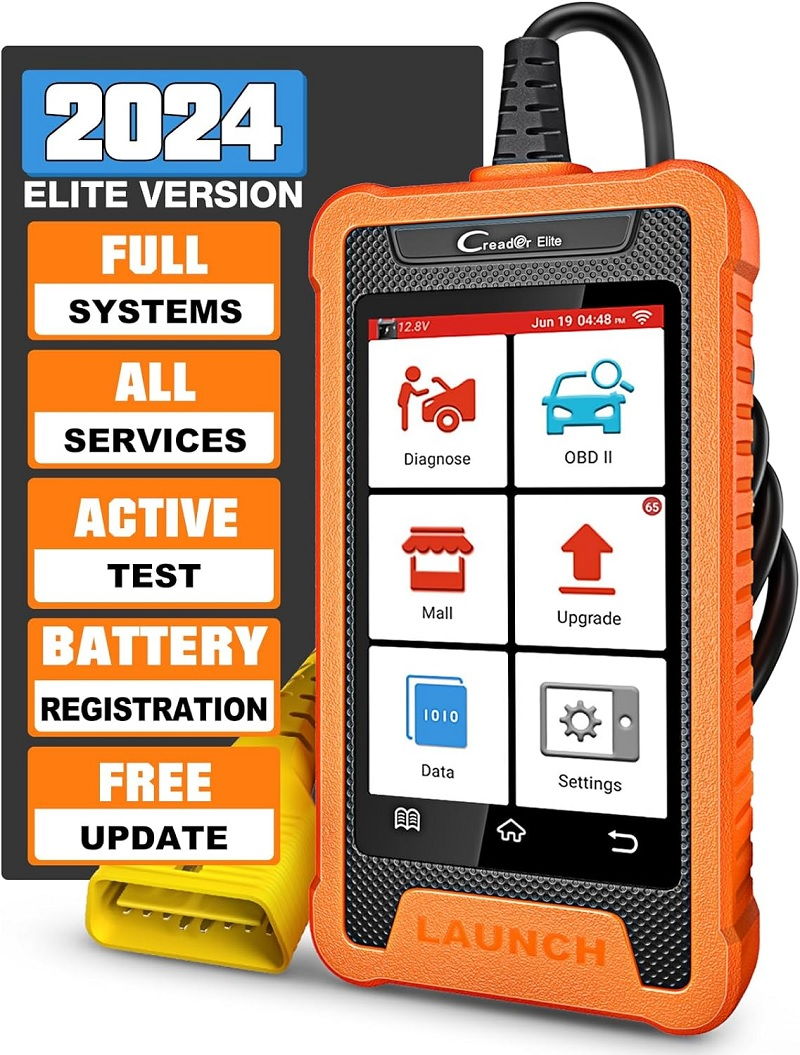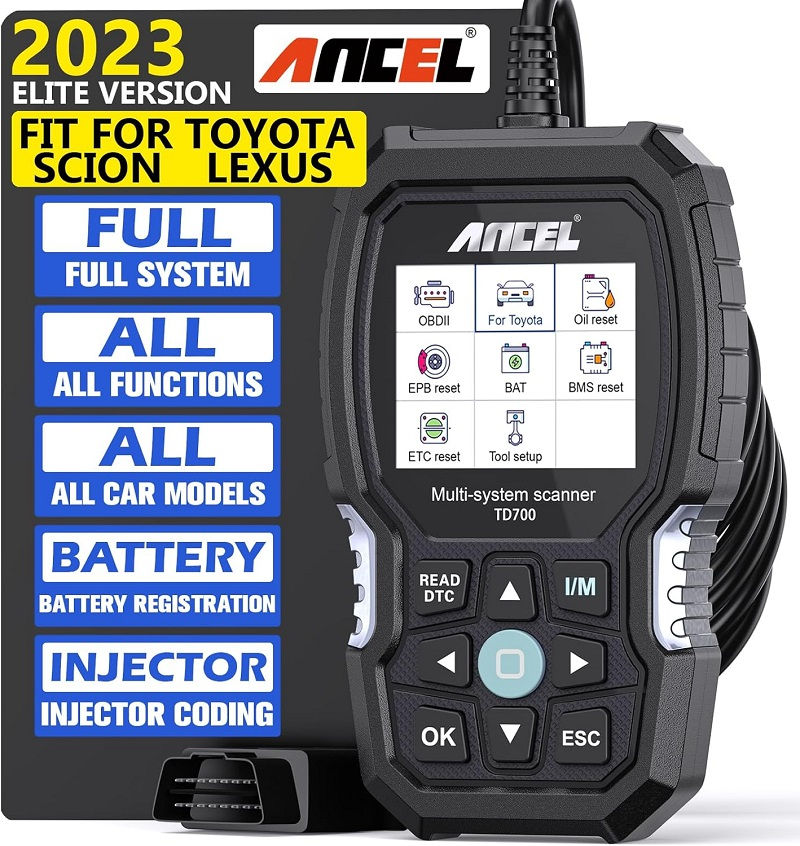This post contains affiliate links. This means I will make a commission at no extra cost to you should you click through and make a purchase [ “As an Amazon Associate, I earn from qualifying purchases.” ]. Read the full disclosure here.
VSC Light Lexus GuideMechanic.Com When it comes to ensuring a safe and secure driving experience, modern vehicles are equipped with advanced safety features.
One such feature is the Vehicle Stability Control (VSC) system, which plays a crucial role in maintaining stability and control during challenging driving conditions.
In Lexus vehicles, the VSC light serves as a vital indicator, alerting drivers to potential issues with this system. Understanding the meaning behind the VSC light and knowing how to respond to it can help you address any underlying problems before they escalate.
In this comprehensive guide, we will delve into the details of the VSC light in Lexus vehicles. We will explore its purpose, common triggers, and the necessary steps to take if it illuminates on your dashboard.
Whether you are a proud owner of a Lexus or simply curious about automotive safety, this article will provide you with valuable insights and practical information to help you navigate the road safely.
See Also: Check VSC Lexus IS250
VSC Light Lexus: What is the VSC System?

The VSC system, also known as the Vehicle Stability Control system, is a sophisticated technology designed to enhance vehicle stability and control. It utilizes various sensors and actuators to monitor and adjust the vehicle’s performance in real-time.
By continuously analyzing data such as wheel speed, steering input, and vehicle yaw rate, the VSC system can detect any deviation from the intended path and take corrective actions to maintain stability.
Components of the VSC System
The VSC system consists of several key components that work together to ensure optimal vehicle stability. These components include:
- Wheel Speed Sensors: These sensors monitor the rotational speed of each wheel, allowing the VSC system to determine if any wheels are losing traction.
- Steering Angle Sensor: This sensor provides information about the steering angle input from the driver, helping the VSC system calculate the desired vehicle trajectory.
- Yaw Rate Sensor: The yaw rate sensor measures the rate at which the vehicle is rotating around its vertical axis. This information is crucial for the VSC system to detect and correct any oversteer or understeer situations.
- Brake Actuators: The brake actuators are responsible for applying selective braking pressure to individual wheels, helping to stabilize the vehicle during sudden maneuvers or loss of control.
By constantly monitoring these components and making necessary adjustments, the VSC system ensures that the vehicle remains stable and responsive, even in challenging driving conditions.
VSC Light Lexus: The Purpose of the VSC Light
The VSC light, which is typically represented by an icon resembling a car with curvy lines underneath, serves as an essential indicator on your Lexus dashboard.
When the VSC light illuminates, it signifies that the VSC system has detected an issue or a potential malfunction that requires attention.
Understanding the meaning behind the VSC light is crucial for promptly addressing any underlying problems and maintaining the safety of your vehicle.
Steady VSC Light
If the VSC light remains steadily illuminated on your dashboard, it indicates that there may be a problem with the VSC system. There are several potential causes for a steady VSC light, including:
- Malfunctioning Sensors: Faulty wheel speed sensors, steering angle sensors, or yaw rate sensors can trigger the VSC light. These sensors play a vital role in the proper functioning of the VSC system, and any malfunction can affect its performance.
- Brake System Issues: Problems with the brake actuator or other components of the brake system can also cause the VSC light to illuminate. This can include issues such as a malfunctioning brake pressure switch or a faulty brake master cylinder.
- Electrical Problems: Wiring issues or electrical faults within the VSC system can lead to a steady VSC light. These problems may require a thorough inspection of the electrical connections and circuits to identify and resolve the issue.
It is important to note that while a steady VSC light indicates a potential problem, it does not necessarily mean that the VSC system is completely disabled.
However, it is recommended to have the issue diagnosed and resolved as soon as possible to ensure the optimal functioning of the VSC system.
Flashing VSC Light
If the VSC light is flashing on your dashboard, it indicates that the VSC system is actively engaged and working to stabilize the vehicle.
A flashing VSC light usually occurs in situations where the VSC system is being pushed to its limits, such as during sudden acceleration or braking. This is typically a normal response and indicates that the VSC system is actively intervening to maintain stability.
However, if the VSC light continues to flash under normal driving conditions or remains flashing even after the challenging driving situation has passed, it could indicate a malfunction or a more severe problem with the VSC system.
In such cases, it is advisable to have the vehicle inspected by a qualified technician to identify and address any underlying issues.
VSC Light Lexus: Common Triggers for the VSC Light

The VSC light can be triggered by various factors, ranging from minor issues to more significant problems within the VSC system.
Understanding these common triggers can help you identify the potential cause of the VSC light and take appropriate action to resolve the issue.
1. Loose Gas Cap
Believe it or not, something as simple as a loose gas cap can trigger the VSC light in some Lexus vehicles. A loose or improperly secured gas cap can cause an imbalance in the fuel system, leading to a disruption in the VSC system’s operation.
If you notice the VSC light illuminating shortly after refueling, try tightening the gas cap securely and see if the light goes off after a few driving cycles.
2. Wheel Speed Sensor Issues
The wheel speed sensors play a critical role in determining the rotational speed of each wheel. If these sensors become dirty, damaged, or malfunction, they may provide inaccurate data to the VSC system, triggering the VSC light.
Common causes of wheel speed sensor issues include dirt, debris, or corrosion on the sensor surfaces, as well as faulty wiring connections. Cleaning the sensors and ensuring proper electrical connections can often resolve this issue.
3. Faulty Steering Angle Sensor
The steering angle sensor provides information about the driver’s steering input, allowing the VSC system to calculate the desired vehicle trajectory. If this sensor malfunctions or provides incorrect data, it can trigger the VSC light.
Common causes of steering angle sensor issues include sensor calibration errors, wiring problems, or physical damage. Recalibrating or replacing the sensor may be necessary to rectify the issue.
4. Yaw Rate Sensor Problems
The yaw rate sensor measures the rate at which the vehicle is rotating around its vertical axis. If this sensor malfunctions or provides inaccurate readings, it can affect the VSC system’s ability to detect and correct oversteer or understeer situations.
Yaw rate sensor issues can be caused by wiring problems, sensor calibration errors, or physical damage. Proper diagnosis and potential replacement of the sensor may be required to resolve the problem.
5. Brake System Malfunctions
The VSC system relies on the proper functioning of the brake system to stabilize the vehicle during challenging driving conditions.
Any issues with the brake system, such as a malfunctioning brake actuator, faulty brake pressure switch, or worn-out brake pads, can trigger the VSC light.
It is important to regularly inspect and maintain the brake system to ensure its optimal performance and prevent VSC light issues.
6. Electrical Faults
The VSC system relies on a complex network of electrical connections and circuits to function properly. Any faults or disruptions in these electrical components can cause the VSC light to illuminate.
Electrical problems can include issues such as damaged wiring, loose connections, blown fuses, or faulty relays. Thorough inspection and repair of the electrical system may be required to rectify the issue.
See Also: Lexus Won’t Start But Has Power
VSC Light Lexus: Diagnosing VSC Light Issues
When the VSC light illuminates on your Lexus dashboard, it is crucial to accurately diagnose the underlying issue to ensure timely and appropriate repairs.
While some VSC light issues can be resolved through simple fixes, others may require professional intervention. Understanding the diagnostic process can help you identify the problem and determine the necessary course of action.
1. Visual Inspection
The first step in diagnosing VSC light issues is to perform a visual inspection of the vehicle. Start by examining the exterior of the vehicle for any visible signs of damage or loose connections.
Inspect the wheel speed sensors, steering angle sensor, and yaw rate sensor for any physical damage or debris accumulation. Additionally, check the brake system components for any leaks, worn-out brake pads, or damaged brake lines.
2. Diagnostic Tools
To accurately diagnose VSC light issues, specialized diagnostic tools are often required. These tools can communicate with the vehicle’s onboard computer system, retrieve error codes, and provide valuable data about the specific problem.
Common diagnostic tools used for VSC system diagnosis include OBD-II scanners and advanced scan tools capable of accessing the ABS (Anti-lock Braking System) and VSC system modules.
3. Retrieving Error Codes
Once the diagnostictools are connected to the vehicle’s onboard computer system, they can retrieve error codes related to the VSC system. These error codes provide valuable information about the specific issue triggering the VSC light.
The technician can interpret these codes to identify the affected component or system and determine the appropriate course of action for repairs.
4. Testing Sensors and Actuators
In addition to retrieving error codes, testing the sensors and actuators involved in the VSC system is crucial for accurate diagnosis. This includes conducting tests on the wheel speed sensors, steering angle sensor, yaw rate sensor, and brake actuators.
Specialized diagnostic equipment can measure the output and response of these components, helping to pinpoint any malfunctions or discrepancies that may be causing the VSC light to illuminate.
5. Inspecting Electrical Connections
Electrical faults are a common cause of VSC light issues, and inspecting the electrical connections within the VSC system is an important step in the diagnostic process.
The technician will thoroughly examine the wiring harnesses, connectors, and terminals for any signs of damage, corrosion, or loose connections. Repairing or replacing faulty electrical components can often resolve VSC light problems caused by electrical issues.
6. Road Testing
Road testing the vehicle is another essential aspect of diagnosing VSC light issues. By simulating real-world driving conditions, the technician can observe the behavior of the VSC system and monitor any abnormal responses or malfunctions.
Road testing allows for a comprehensive assessment of the VSC system’s performance and can help diagnose issues that may not be evident during stationary tests.
7. Consultation with Technical Resources
In certain cases, diagnosing complex VSC light issues may require the expertise of technical resources provided by the vehicle manufacturer or specialized automotive diagnostic services.
These resources can provide valuable insights, troubleshooting guidance, and access to comprehensive technical databases, ensuring accurate diagnosis and effective resolution of the problem.
VSC Light Lexus: Steps to Take When the VSC Light Comes On
Check out this Front Seat Jackers® – Compatible with Toyota Tacoma, 4Runner, FJ, and Lexus GX

When the VSC light illuminates on your Lexus dashboard, it is important to take appropriate steps to ensure your safety and prevent further damage to your vehicle. Knowing how to respond when the VSC light comes on can help you mitigate potential risks and address the underlying issue promptly.
1. Stay Calm and Assess the Situation
When the VSC light comes on, it is natural to feel a sense of concern or uncertainty. However, it is important to stay calm and assess the situation.
Take note of any changes in the vehicle’s performance or handling and evaluate the severity of the issue. If the vehicle feels unstable or unsafe to drive, it is advisable to pull over to a safe location and seek professional assistance.
2. Check for Obvious Causes
Before taking any further action, it is worth checking for any obvious causes of the VSC light illumination. For example, ensure that the gas cap is tightly secured, as a loose gas cap can trigger the VSC light in some cases.
Additionally, visually inspect the vehicle for any visible signs of damage or loose connections that may be affecting the VSC system.
3. Restart the Vehicle
In some instances, the VSC light may illuminate due to a temporary glitch in the system. Restarting the vehicle can sometimes resolve such issues by resetting the onboard computer system.
Turn off the engine, wait a few moments, and then start the vehicle again. If the VSC light remains illuminated after the restart, proceed with the following steps.
4. Check for Other Warning Lights
While the VSC light is an important indicator, it may not always be the only warning light that illuminates on your dashboard. Check for the presence of any other warning lights, such as the ABS light or the Check Engine light.
The presence of additional warning lights can provide valuable clues about the underlying issue and help prioritize the necessary repairs.
5. Proceed with Caution
If the VSC light is steady and there are no other noticeable issues with the vehicle’s performance, you can cautiously proceed with driving. However, it is important to exercise caution and drive at a moderate speed, avoiding any sudden or aggressive maneuvers.
Keep in mind that the VSC system may not be fully functional, and driving under challenging conditions or pushing the vehicle to its limits can increase the risk of loss of control.
6. Schedule a Diagnostic Inspection
Regardless of the severity of the VSC light issue, it is highly recommended to schedule a diagnostic inspection with a qualified technician as soon as possible.
Even if the vehicle seems to be driving normally, there may be underlying problems that require attention. A professional inspection can accurately diagnose the issue and provide the necessary repairs to restore the proper functioning of the VSC system.
7. Follow the Technician’s Recommendations
After the diagnostic inspection, the technician will provide you with a detailed report of the findings and recommendations for repairs.
It is important to carefully consider and follow the technician’s recommendations to ensure the safety and performance of your vehicle. Addressing any identified issues promptly can prevent further damage and potentially save you from costly repairs in the future.
See Also: Lexus Maintenance Required Meaning
Related video of The VSC Light in Lexus: What You Need to Know
- Project Trucks for Sale Cheap - July 1, 2025
- Salvage Title Trucks for Sale - July 1, 2025
- Restored Classic Trucks for Sale - July 1, 2025

